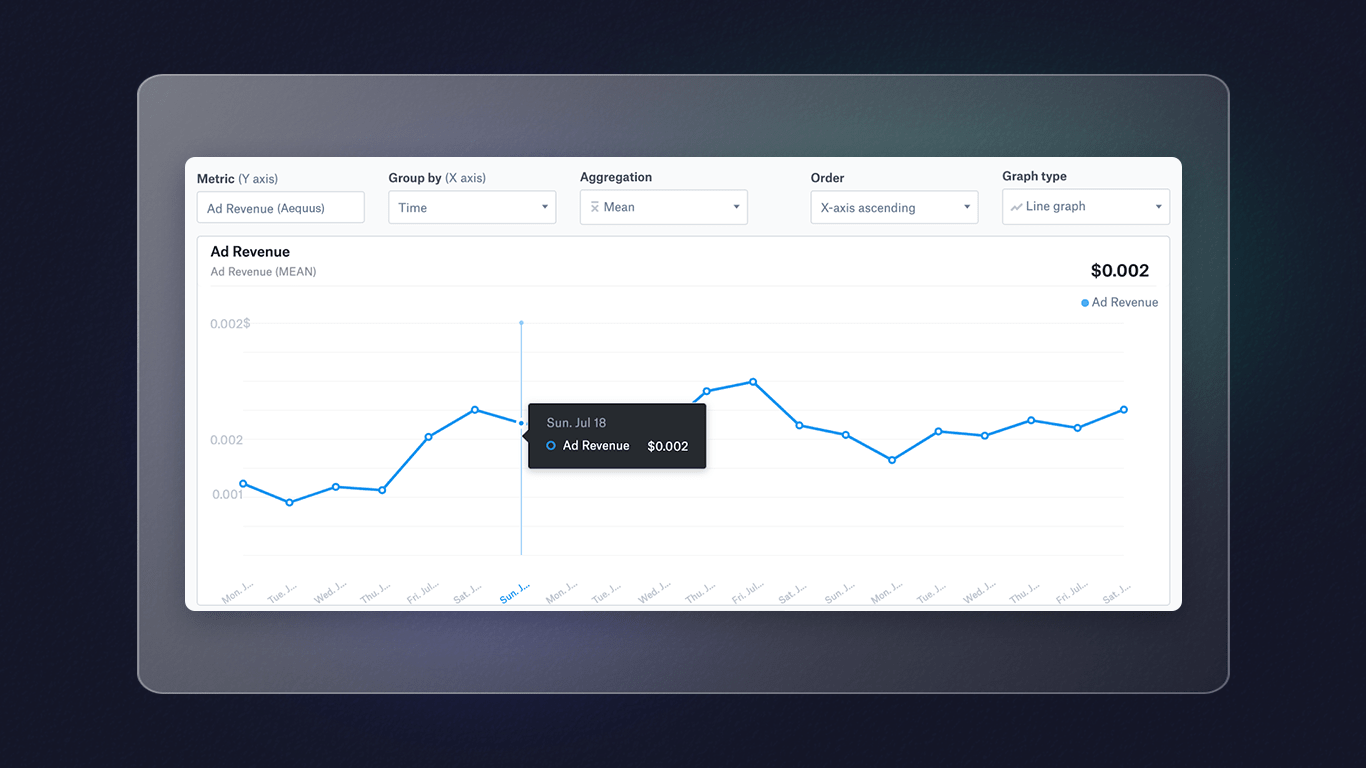· 4 min read
Ad Revenue From Aequus Now in GameAnalytics

Geetanjali Kaur
Senior Product Manager at GameAnalytics
Our collection of Ad Revenue providers is growing. A couple weeks back, we were shouting about Applovin MAX being added into the mix of things. And this time, we’re thrilled to let you know that we’ve just partnered up with Aequus. Meaning you can now analyze your ad revenue from Aequus in your GameAnalytics account.

Again, this is another great addition to our analytics platform. Here’s the docs to get you started. And if you want to learn exactly what this means for you, then read on.
Let’s get to it.
What’s new in GameAnalytics?
- We added support for impression-level ad revenue data from Aequus (like we did earlier for MAX, MoPub, Fyber, etc)
- This means you can now:
- query and filter data for ad revenue metrics from Aequus in the Explore Tool
- optimize ad revenue from Aequus using A/B Testing
- see the most popular metrics related to ad revenue data for Aequus in our Ads Dashboard. If you are using more than one ad network provider, this will show a combined view.
What is Aequus?
Aequus is a leading mediation and bidding platform. A place that’ll help you buy and sell your ad space, and help you make money from your ads.
A couple of words from Aequus:
“We give publishers a neutral, open and transparent bidding and mediation platform. Our platform is built to help publishers and developers have the freedom to work with any demand partner they choose. Keeping our pricing and bidding model clear and transparent, game publishers have the best tools possible to take their ad monetization to the next level”
How does Aequus work?
It’s purely a mediation and bidding platform. But Aequus does things a little differently. Which is why we’re so eager to partner with them.
Here’s some more words from Aequus:
“We’ve pushed aside the blind revenue sharing pricing model (which is fairly common with other providers). Besides, we’ll never have our own demand — which usually creates a conflict of interest — as we don’t publish games to compete with our partners. And on the demand side of things, we let publishers connect directly with any network or DSP they choose. Aequus doesn’t charge bidders a fee to compete inside the platform. We just focus purely on mediation and bidding.”
How does it work?
Here are the links to all SDK docs:
Once you’ve read through our docs and downloaded all of the correct SDKs, then you can get started. It’s a fairly straightforward implementation. When you’re ready, log into our platform and:
- Head to the Explore Tool.
- Open the Metric Picker.
- Select ILRD events > Ad revenue (Aequus) or Impressions (Aequus).
- And then feel free to filter the data down even further (by different dimensions like country or platform).

What does this mean for you?
With our new partner, it means:
- It’s now easier for you to refer all your game related data in one place (by including ad revenue reporting from different ad network providers).
- You can analyze in detail the performance of your ads: e.g how much revenue per user is generated, whether they perform better in some regions over the others, and more.
- And you can test different variants using A/B Testing and see exactly how these impact their ad revenue (optimize for player LTV).
How will this integration help you?
Other than the obvious reason that we wanted to expand our networks, we were really excited about working with Aequus. They have a neutral approach, which means developers and publishers can bid fairly, without the fear of conflict of interest getting in the way.
Our partner has a few more words to say around this:
“We’re thrilled about this new Aequus integration within GameAnalytics. It means publishers and developers will be able to see and work with all of their data in one place. There are a lot of gaps in the industry at the moment, and we think this is a first step into helping developers make better decisions about their user-level ad strategy and campaigns.”